Rising metals prices ring in 2018
Strong metals prices bode well for Alaska's mining sector North of 60 Mining News – January 5, 2018
Last updated 9/24/2020 at 5:50pm
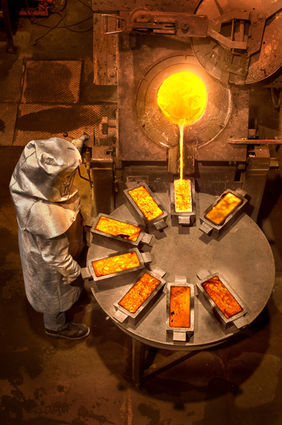
Kinross Gold Corp.
Kinross Gold's Fort Knox Mine near Fairbanks, Alaska averages more than 1,000 ounces of gold poured each day.
With the price for an ounce of gold pushing back above US$1,300 to ring in the new year – along with zinc and copper selling at multi-year highs and trending higher – 2018 is shaping up to be a good year for Alaska's mining sector.
Together, zinc and gold account for more than 80 percent of the value of metals mined in Alaska – silver and lead account for most of the balance.
While there is currently no significant copper production in Alaska, the Far North state hosts significant advanced staged copper exploration projects that will likely benefit from the rising price of this increasingly demanded metal.
Golden 2018
On Jan. 2, the first trading day of 2018, gold rallied to US$1,312/oz, the highest price seen since its yearly peak in September and US$161/oz higher than the opening day of 2017.
Most analysts predict that, short of geopolitical unrest driving safe-haven demand, gold prices will hold in the US$1,300/oz range in 2018, trading between US$1,200 and US1,400/oz during the year.
ScotiaMocatta, the metals banking division of Canada's Scotiabank, sees gold markets as "fairly well-balanced" and is "mildly bullish" for the price of the precious metal for 2018.
"We expect prices to work higher through the headwind of firmer US monetary policy and expect there will be further bouts of safe-haven buying on the back of the North Korea situation," the bank wrote in its "Precious Metals 2018 Forecast".
Gold prices holding steady at around US$1,300/oz is good news for Alaska, a state that produces nearly 1 million ounces of the precious metal each year.
Currently, five hardrock operations – Kinross Gold Corp.'s Fort Knox Mine near Fairbanks, Sumitomo Metal Mining's Pogo Mine near Delta Junction, Coeur Mining Inc.'s high-grade Kensington gold mine in Southeast Alaska, and Hecla Mining Company's Greens Creek silver mine near Juneau – and placer mines produce this gold across wide swaths of the Last Frontier.
Alaska's annual gold output is expected to more than double if the Donlin Gold project goes into production at the 1.1-million-oz per year levels predicted in a feasibility study for the project. Permitting for this 39-million-oz gold project is expected to be completed by mid-year.
Donlin Gold partners – Barrick Gold Corp. and Novagold Resources Inc. – are expected to make a formal decision on developing a mine at this world-class gold project in the coming months.
Zinc heading higher
While gold is an iconic and important contributor to Alaska's mining sector, at today's prices zinc is the state's top metal in terms of value produced each year. This is especially true with the surge in zinc price during 2017.
Going into 2018, zinc is selling for around US$1.50 per pound, which is roughly a 25 percent increase over US$1.20/lb levels going into 2017 and the highest price for the galvanizing metal in more than a decade.
With demand outpacing supply and only a few days of zinc in major metals exchanges inventories, analysts predict that the price of this metal will continue to rise.
Scotiabank expects zinc to average US$1.50/lb this year and continue to move higher into next.
"We anticipate further gains for zinc as markets remain tight over the next two years, with prices expected to peak and average US$1.60/lb in 2019," the Canadian bank wrote in its December commodities report.
This forecast is great news for Teck Resources Ltd., operator of Red Dog, and NANA Regional Corp., the Alaska Native corporation that owns the land where this world-class zinc mine is located.
Red Dog produced roughly 1.2 billion lb of zinc in 2017, which is about 5 percent of the world's global supply of this important industrial metal.
While zinc is the primary metal produced at Red Dog, it also is an important tertiary metal at Hecla's Greens Creek Mine.
Thanks to zinc, along with healthy portions of lead and gold, the cost to produce an ounce of silver at this Southeast Alaska operation was negative US15 cents during the third quarter of 2017.
With continued strength in zinc and gold prices, these metals could very well pay Hecla's costs for mining silver at Greens Creek in 2018.
Balanced silver market
As the cost to produce on ounce of silver at Greens Creek falls into negative territory, many analysts are predicting the price of this precious metal is on the rise.
Compared to other metals, silver prices remained largely flat throughout 2017. Going into last year the metal was selling for US$15.95/oz and by the end of the year it was selling for US$16.87/oz, roughly a five percent gain on the year.
The Bank of Montreal, however, sees healthy silver price gains coming in 2018.
The Canadian bank predicts the grey metal will reach US$19/oz this year.
While predicting slightly more modest gains, Goldman Sachs also sees silver rising this year.
"We are finally beginning to see evidence of silver industrial demand picking up with strong global growth, as the impact of both thrifting and substitution appear to fade. Therefore, strong global growth should, in our view, lead silver to outperform gold, as it has in previous expansion phases," Goldman Sachs analysts inked in a December report.
Scotiabank predicts that silver demand will pick up in 2018 but sees increased supply keeping price gains modest for the year.
"More widespread economic growth should lead to a pick-up in household spending on luxury items, which could give the jewelry market a much-needed boost after being in the doldrums in recent years," ScotiaMocatta analysts penned in a December silver report. "We also expect growth in solar power to remain strong, especially as more electricity will be needed to fuel the growing market for electric vehicles."
ScotiaMocatta is anticipating a balanced silver market this year with prices ranging from US$15 to US$19/oz.
EVs driving copper
The price of copper rallied nearly 28 percent in 2017, ending the year at US$3.24/lb, the highest mark since mid-2014.
Earlier in 2017, analysts forecast that the copper market would lose steam and prices would retreat by the end of the year – predictions that did not come to fruition.
At least part of the reason the price of copper is continuing to be driven upward is the demands of the growing electric car industry.
"Pure electric vehicles contain almost four times more copper than a combustion engine - at around 80 kilograms (175 lb) per vehicle - clearly a step change for demand that is to be accelerated as China grapples with its pollution problem," Max Court, senior commodity analyst at S&P Global Market Intelligence Metals & Mining Research penned in a December report.
While copper is not currently produced in Alaska, the state hosts world-class deposits that are on pace to deliver the electrical conductive metal to world markets in the coming years.
The best known of these is Pebble, the largest undeveloped copper deposit on Earth. This Southwest Alaska project hosts roughly 56.8 billion lb copper, 70.4 million oz gold, 3.4 billion lb molybdenum and 343.6 million oz silver in the measured and indicated resource category.
In December, Pebble Partnership submitted permit applications for the Pebble Mine project to U.S. Army Corps of Engineers, initiating the project review process under the National Environmental Policy Act.
With permitting and construction, it is expected that it will be at least a decade before Pebble is ready to begin supplying copper to the growing demand driven by electric vehicles.
Court said lower head-grades is another challenge facing global copper mines tasked with keeping pace with global demand.
"Across 200 key copper mines, head grades of treated copper volumes have fallen from approximately 0.75 percent in the early 2000s to 0.56 percent today, and are expected to decrease further to 0.54 percent by 2020," the S&P Global Market Intelligence analyst wrote.
Trilogy Metals Inc.'s Arctic deposit in Northwest Alaska boasts copper grades more than five times this global average.
According to the most recent resource calculation, Arctic hosts 36 million metric tons of indicated resource averaging 3.07 percent (2.44 billion lbs.) copper, 4.23 percent (3.36 billion lbs.) zinc, 0.73 percent (581 million lbs.) lead, 0.63 grams-per-metric-ton (728,000 oz) gold, and 47.6 g/t (55 million oz) silver.
Trilogy is currently finalizing a prefeasibility study for Arctic, a milestone that advances this spectacularly high-grade deposit another step toward permitting and development.
With its mix of base and precious metals, Arctic serves as a microcosmic example of Alaska's mining sector as a whole – a sector that is positioned to benefit from strong gold, zinc, silver and copper prices in 2018.












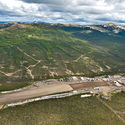
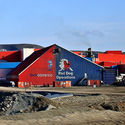
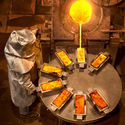
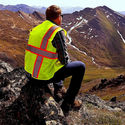
Reader Comments(0)